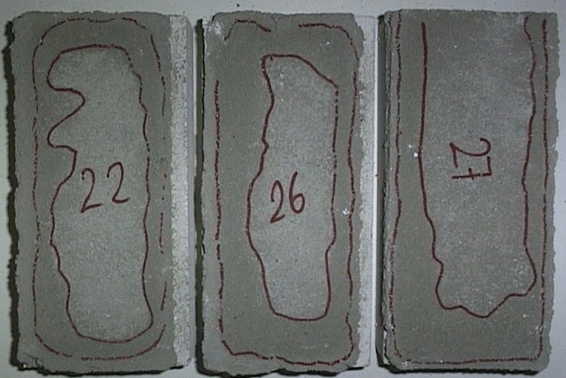A.T. Vermeltfoort[1]
- Assistant professor, Eindhoven University of Technology, Department of Structural Design, BKO, P.O. Box 513, Postvak 7, 5600 MB Eindhoven. The Netherlands.
ABSTRACT
Thirty three masonry discs, 25 mm thick, cut from couplets, were tested in compression.
Specimens in the shape of discs were needed to allow for deformation measurements with ESPI, a laser speckle method. Three load cells made it possible to calculate the load eccentricity. General purpose (GP) mortars (15 mm) medium mortars (MM) (8 mm) and thin layer (TL) mortars (4 mm) were applied in combination with five brick types.
In average, the strength of the discs was 1.5 times the strength of prisms made of the same materials. However, Young’s modulus was the same for both specimen types. Comparison of ESPI and LVDT results, in combination with measured reactions showed bending in the specimens. Variation of load eccentricity was found when cracking of the discs occurred. The ESPI measurements showed large strain variations at the edges of the GP and MM mortar joints. For completely filled TL joints, strains were almost equally distributed over the full joint. In average, the E values of brick and mortar were of the same order of magnitude in each brick-mortar combination. Test results will be used for detailed numerical simulation of masonry behaviour.
Key words: ESPI, compressive behaviour, mortar, boundary conditions
MORJTS04



